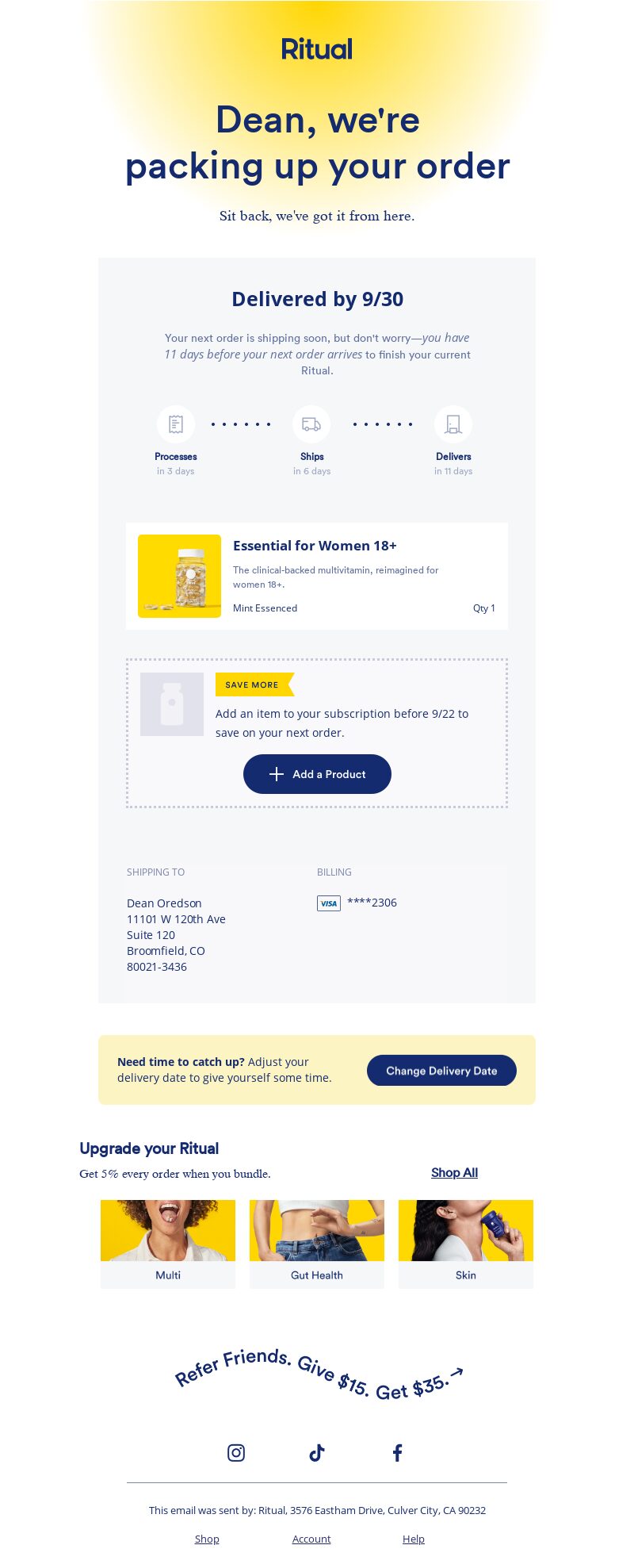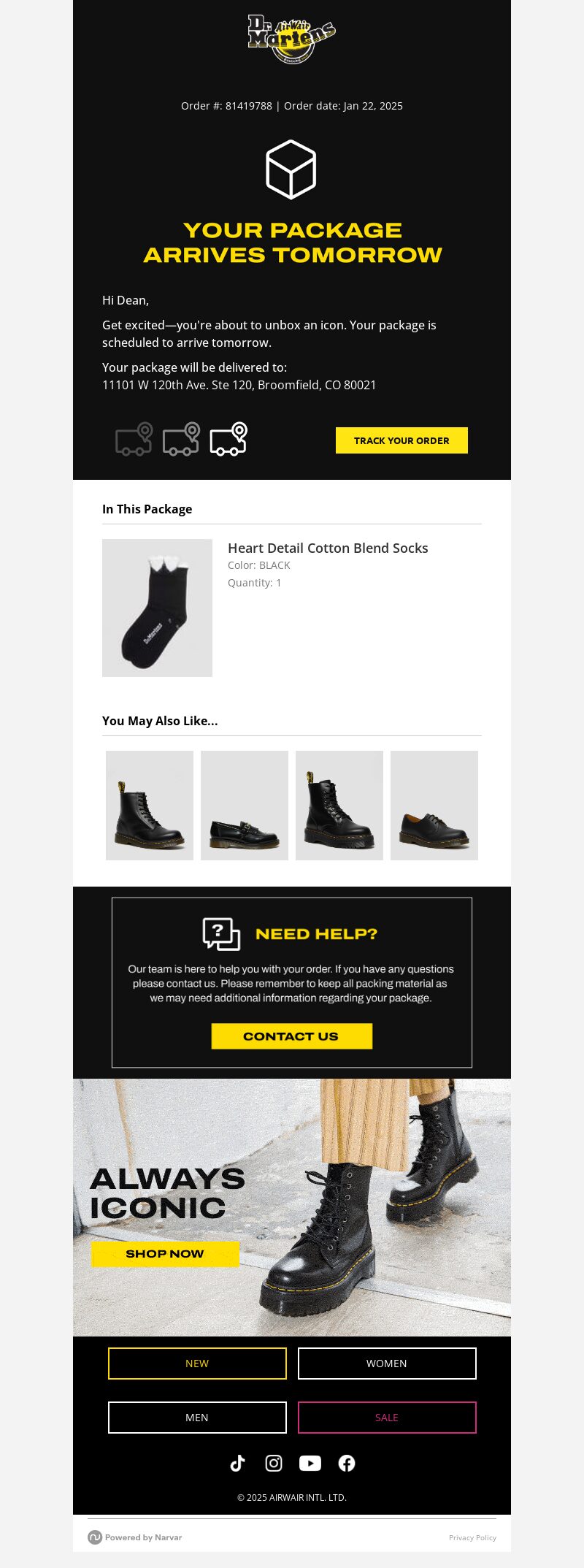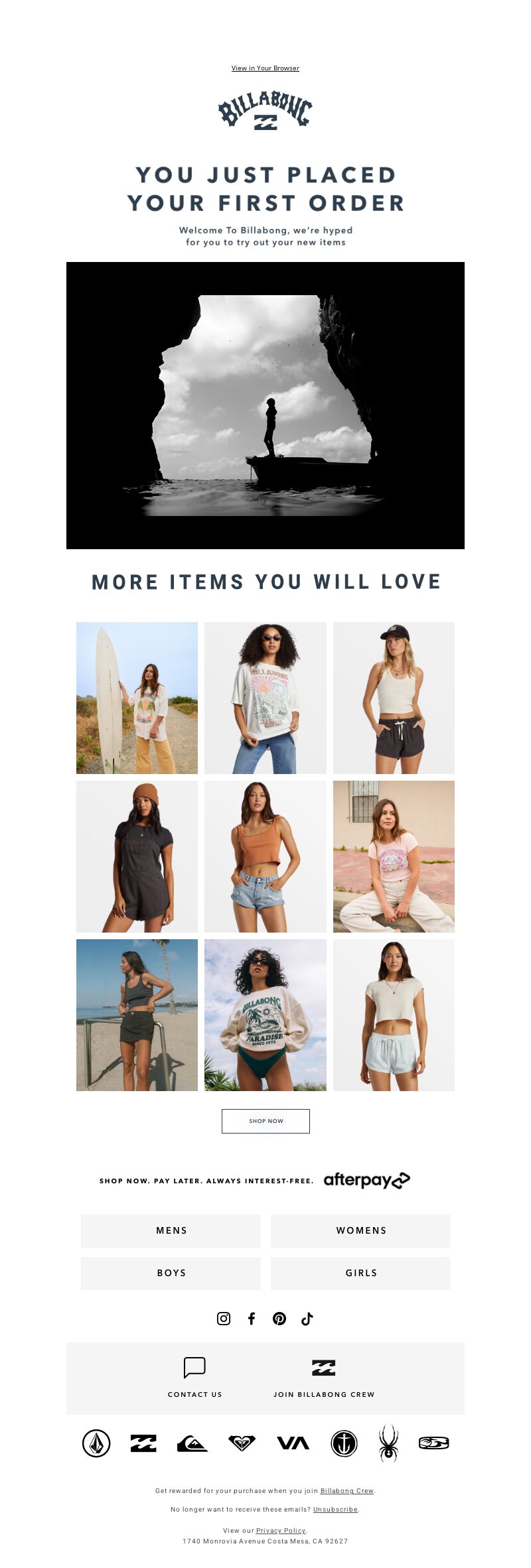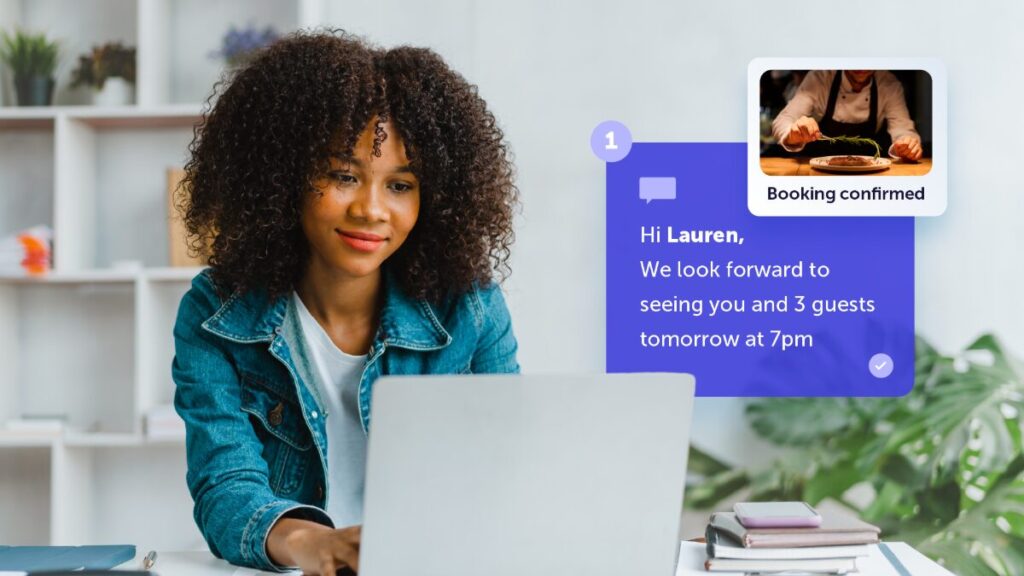How post-purchase marketing can drive customer delight

Think about the last time you bought something online you were really excited about. You clicked “buy,” got the confirmation email… and then what? Often, it’s just silence until the parcel arrives. That moment after the sale? It’s a huge missed opportunity for businesses.
Smart companies know the magic doesn’t stop when the payment goes through. In fact, that’s where you can build real, lasting relationships. Let’s talk about post-purchase marketing – how staying in touch after the sale can make your customers feel genuinely happy and keep them coming back for more.
What is post-purchase marketing?
Basically, it’s everything you do to connect with a customer after they’ve bought something from you. Forget chasing new leads for a moment; this is all about looking after the people who’ve already chosen you. This is the core of effective post-purchase marketing.
It’s about:
- Making customers feel good about their decision.
- Helping them get the most out of what they bought.
- Building a genuine connection, not just processing a transaction.
- Turning that one-time buyer into a loyal fan who sticks around.
It’s shifting from just making a sale to actually building a relationship.
Why bother focusing on what happens after the sale?
Ignoring customers after they’ve made a purchase is like inviting them to forget about you. Nurturing those who have already invested in your brand is important for strong post-purchase relationship building. Here’s six reasons why focusing on post-purchase marketing is a smart move:
1. Boost customer lifetime value (CLTV)
When customers feel engaged and happy after making a purchase, they are much more likely to return for more. For businesses, even a small increase in customer retention can translate into meaningful revenue growth over time.
2. Enhance customer loyalty and retention
A positive post-purchase experience builds trust and loyalty. When you provide support and show appreciation after the sale, you build trust and foster a sense of loyalty. Customers who feel valued are less likely to be tempted by competitors.
3. Drive word-of-mouth marketing and referrals
By creating a great post-purchase experience, you’re more likely to encourage word-of-mouth marketing and referrals. Happy customers will recommend your products or services to their friends and family, which can lead to new customers without much effort on your part.
4. Gather valuable feedback for improvement
Asking for feedback while customers are highly engaged is a smart move. It allows you to gather valuable insights into how customers perceive your products and overall shopping experience. This feedback can highlight areas for improvement and help you better meet customer needs going forward.
5. Strengthen brand reputation
Providing excellent post-purchase support strengthens your brand’s reputation. When customers feel cared for, they’re more inclined to leave positive reviews and share their experiences, which builds trust and credibility for your business.
6. Cross-selling and upselling opportunities
Understanding what customers have purchased opens the door for cross-selling and upselling opportunities. By recommending relevant products or upgrades, you can increase sales in a way that feels personalized and thoughtful, rather than pushy.
Post-purchase marketing automation strategies
Effective post-purchase marketing goes hand in hand with marketing automation. It allows you to send messages that are timely and relevant, which can greatly improve the customer experience, all while saving you from constant manual work. Here are some key strategies for implementing marketing automation that you might find useful:
1. Send a personalized thank you
While an automated order confirmation is essential, it can often feel bland. Consider following it up with a warmer, separate thank-you email. Use the customer’s name and mention the item they purchased. A simple, genuine message like “Thanks for choosing us! We hope you love your purchase” goes a long way in making customers feel valued, rather than just another order number in the system.
2. Keep them in the loop on delivery
No one enjoys the “Where’s my parcel?” guessing game, as it only causes unnecessary worry. Send a shipping confirmation update (such as when the order is packed, shipped, or out for delivery) to send proactive notifications via email or even SMS messages.
Include a tracking link to enhance transparency, which offers customers peace of mind and shows that you’re managing the process smoothly. This results in less worry for them and fewer “Where is my order?” inquiries for you.
3. Help them get started smoothly
If your product requires setup, has a learning curve, or comes with exciting features, assist your customers. Send a friendly automated email shortly after delivery with links to a quick start guide, a helpful video, or some top tips. Supporting customers in having that ‘aha’ moment quickly allows them to enjoy their purchase without encountering frustrating roadblocks.
4. Share useful content
Think beyond simply selling more products. What related tips, ideas, or content could genuinely help or interest customers based on what they bought? For instance, if they purchased gardening gear, you might send seasonal planting tips via email or even an MMS message with visual guides. If they acquired new software, share guides to advanced features. Providing real value long after the transaction positions your brand as a helpful resource and keeps you gently top-of-mind.
5. Make them feel special
If you have a loyalty program, that’s fantastic. Automate an invitation to join after their first purchase. Additionally, set up automated messages to remind members of their points balance, inform them about rewards they can claim, send a little something for their birthday, or grant them early access to sales. It’s all about making your regular customers feel like valued insiders—part of an exclusive club.
6. Ask for feedback and act on it
Timing is everything when asking for feedback. Configure an automated email or survey invitation to be sent out a while after delivery, giving customers enough time to experience the product.
Keep it concise. Importantly, if someone takes the time to respond, acknowledge it (even an automated acknowledgment is better than silence). Even better—if you make changes based on feedback, let customers know. This demonstrates that you value their opinions and are committed to improving.
7. Suggest products they love
When done thoughtfully, using purchase and browsing data for automated product recommendations can be genuinely helpful. For example, recommend relevant add-ons (like “People who bought X often find Y useful”), accessories that complement their item, or timely refill reminders. The key is to ensure true relevance—aim for helpful nudges rather than pushy, random sales pitches.
8. Add a surprise
Consider automatically triggering a small, unexpected discount code for their next purchase a month after their first order.
Alternatively, identify your high-value or long-term customers so your team can occasionally include a freebie or handwritten note in their next shipment. These small, unexpected gestures create big smiles and lasting positive memories.
Four post-purchase examples
The journey after “buy” is paved with opportunities to connect. Your email and mobile messaging strategy can turn one-time buyers into loyal fans. Let’s look at four key examples that go beyond basic notifications:
1. Order confirmation
Think of your order confirmation not just as a receipt, but as your opening act in the post-purchase show. It’s often the very first direct communication after someone clicks “buy,” making it a prime opportunity to solidify their decision and start building that crucial long-term connection.
Sending a well-crafted order confirmation does wonders for new customers. It immediately eases any post-purchase jitters, assuring them their transaction went through smoothly. More importantly, it’s your first chance to showcase your brand’s personality and professionalism, laying the foundation for trust and a lasting relationship.
Take a look at Ritual’s order confirmation email. It’s a masterclass in clarity and customer-centricity, focusing precisely on what’s top-of-mind right after a purchase.

Here’s how Ritual’s email works:
- Purchase confirmation: The email confirms that the order has been successfully placed, including essential details such as the order number, items purchased, and the expected delivery date.
- Brand consistency: By using brand-specific elements like logos, colors, and a consistent tone, the email reinforces the brand identity and keeps the customer engaged.
- Trust building: The clear and professional presentation of the email helps build trust, making customers feel confident about their purchase and the brand they’ve chosen.
- Strategic upsell: The email incentivizes customers to enhance their order by adding another item before a specified date, offering them savings on their next purchase.
Ritual’s email shows that order confirmation email can be a powerful touchpoint, enhancing the customer experience and nurturing a positive relationship from the get-go.
2. Shipping update
After the initial excitement of placing an order, the next question on every customer’s mind is: “When will it arrive?” This is where your shipping update emails step into the spotlight. They’re not just functional notifications; they’re opportunities to build anticipation and reinforce your reliability.
A well-timed and informative shipping update can significantly reduce “Where’s my order?” inquiries and, more importantly, keep the positive momentum of the purchase going. It shows you’re on top of things and value keeping your customers informed.
This shipping update email from Dr. Martens manages expectations and keeps the customer engaged during the important delivery phase.

Here’s how Dr Martens email works:
- Clear and immediate status: The email promptly announces that the order has shipped, directly addressing the customer’s primary concern.
- Essential tracking information: Providing a prominent tracking number and a clear “Track Your Order” button empowers customers to monitor their delivery progress in real-time, reducing anxiety and the need to contact support.
- Reinforced purchase details: Briefly reiterating the order number and shipping address provides a quick confirmation and reduces potential errors or confusion.
- Brand personality: Even in a transactional email, Dr. Martens subtly injects their brand identity through their logo, color scheme, and straightforward, no-nonsense tone, maintaining a consistent brand experience.
- Setting delivery expectations: Clearly stating the estimated delivery date helps customers plan and manage their anticipation effectively.
By providing timely, transparent, and easily accessible shipping information, Dr. Martens transforms a potentially anxious waiting period into a smooth and reassuring part of the customer journey. This builds trust and reinforces their commitment to a positive post-purchase experience.
3. Personalized product suggestions
The post-purchase glow is a great time to gently re-engage your customers and showcase more of what you offer. By understanding their recent purchase, you can send highly relevant product suggestions that feel helpful rather than purely promotional. This is your chance to show you “get” their style and needs, potentially leading to cross-sells and increased customer lifetime value.
A well-executed product suggestion email shows that your relationship extends beyond a single transaction. It’s about anticipating their future needs and offering solutions they might not have even considered yet.
Billabong uses product suggestions to offer relevant and appealing follow-up items.

What makes it enticing?
- Visually appealing products: Billabong likely uses high-quality images of their products, showcasing them in an attractive and lifestyle-oriented way that resonates with their target audience.
- Categorized suggestions: Grouping suggestions into logical categories (You Might Also Love) helps customers easily find items that complement their initial purchase.
- Clear call to actions: The product suggestion block includes a direct call to action (“Shop Now” ) making it easy for customers to explore and purchase the recommended items.
- Brand alignment: The suggested products and overall email design maintain Billabong’s brand aesthetic and target audience preferences (e.g., surfing, beach lifestyle).
By thoughtfully curating and presenting relevant product suggestions after a purchase, Billabong aims to enhance the customer experience, increase average order value, and foster a continuous cycle of engagement and sales.
4. Helpful content
The sale might be complete, but your role as a helpful resource doesn’t end there. Post-purchase is an ideal time to provide valuable content that enhances the customer’s experience with their new product and reinforces their decision to buy from you. This type of email builds trust, positions you as an expert, and can even reduce the likelihood of returns by ensuring customers know how to use their purchase effectively.
Think beyond just pushing more products. Consider what information would genuinely help your customers get the most out of what they’ve just bought.
Let’s explore this helpful content email from e.l.f Cosmetics. The brand understands that makeup can sometimes come with a learning curve and proactively offer guidance.

What makes this approach valuable?
- Focus on product usage: e.l.f. provides tips, video tutorials, or how-to guides related to the specific products the customer purchased or makeup application in general. This empowers customers to use their new items confidently.
- Building expertise: Sharing helpful content positions e.l.f. as a knowledgeable authority in the cosmetics space, building trust and credibility beyond just selling products.
- Boosts engagement: The email includes links to social media channels, e.l.f’s loyalty program, and complementary products, encouraging customers to further interact with the brand and explore additional offerings.
e.l.f. Cosmetics understands that empowering their customers with knowledge is a key part of a positive post-purchase experience. By offering helpful content, they not only ensure customer satisfaction with their products but also cultivate a loyal community that sees them as a go-to resource for all things beauty.
It’s time to take post-purchase marketing seriously
Let’s talk about post-purchase marketing and why it really matters. We’ve delved into the strategies you can use to stay connected with customers.
The main takeaway is simple: the transaction is not the end; it marks the beginning of a deeper and more valuable relationship with customers. By actively engaging with customers after they make a purchase, you are strategically building loyalty, repeat business, and turning satisfied buyers into advocates.



